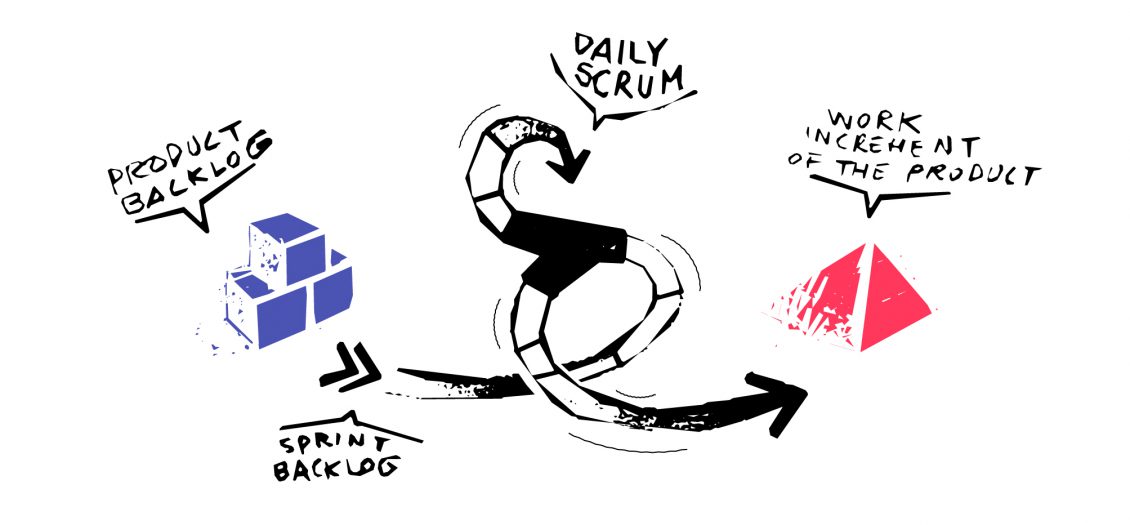Most of project managers have to face projects whose planning was done incorrectly, not in line with customer expectations, with the bad result of big delays and budget overflows, and maybe this has happened to you too.
It is true, companies are being renewed, working groups are heterogeneous and distributed, increasingly flexible, and often, this flexibility forces the project managers to review their processes in order to make them more flexible too. Agile methodologies is the perfect response to this need.
In the 1990’s, there was a significant deviation of the projects from planning and, above all, customer requirements, particularly in the software development sector that used the standard waterfall approach.
Now, as then, companies plan and evaluate the project according to the requirements initially established by making only one final product release that could leads to misunderstandings. The project, so managed, often ends late and out of budget.
Agile methods, such as SCRUM, arise from the need to move the project from the planned and contracted part to bring it closer to the client, its needs and satisfaction throughout the entire development process.
A company that decides to use this framework is able to minimize the risks by keeping track of the progress of the project cyclically. By involving the team and the customer throughout the process, it is much easier to stay aligned with planning and stay in times and budget.
What is the SCRUM methodology?
It is the most famous of the agile techniques, it is a framework, a set of procedures, for the iterative management of the development process from a default set of tasks. It is based on the idea of refining, iteration after iteration, the initial idea of the customer, according to what is released from time to time and to his feedback.
At the beginning of the project we defined a task list (backlog), then, cyclically, we select a prioritized subset executable in about 1-2 weeks (sprint), tasks are completed and at the end of the sprint is submitted to the client for the test. Each sprint includes meetings for prioritizing activities, sharing work progress, and a final one for review and analysis. These cycles are repeated until the end of all activities.
The aim of the SCRUM methodology is to have no misunderstanding, so that the customer can work with the team cyclically to guide the product in the right direction without any unpleasant surprises at the end of the project. Thus, there may be not a final release date, the project closes when the activity list is empty and the customer is satisfied.
This framework also facilitates the estimation of the project, in fact it does not require a complete and total estimate, just a cyclical estimate that protects both the customer and the company from incorrect estimates: if the customer has a limited budget will be limited his list of activities, if the customer has infinite budgets, he can refine and add activities until project completion in agreement with the company.

Why should I use an Agile Methodology?
Although the SCRUM methodology has born in the field of software development, it can be of help to many companies, not only by getting into it but by embracing the general philosophy.
We have recently applied the scrum method to digital marketing finding that also such companies can benefit from this framework, some examples:
1) Define a list of requirements / activities / desires with the customer as detailed as possible: this will help you estimate your project’s effort, make the client aware of any critical issues and protect you from any extra requests.
2) Prioritize the activities and estimate them with your team: this habit can be of great help in carrying out the project, involving the team in estimating, it will be involved and empowered, obtaining from them accurate information that resides only in the knowledge of the technicians. Not only that, the team that prioritizes activities, in fact manages its own workload and becomes more aware of it. Involving the team is the most effective strategy to estimate projects.
3) Organize management in production iterations: whether the customer interacts or the cycles are internal to the company, organizing productions into iterations forces each team to make the point of the situation on regular basis, immediately recognizing any deviations from the expectation avoiding useless delay.
4) Daily meetings for work progress: this activity, often underestimated, is in fact crucial. Updating the team on the progress of their work allows them to share more stressful moments and to help with delays by saving the project from bottlenecks.
The list of benefits that you may have by approaching agile methods are numerous, whether you follow the letter, or just apply the philosophy. The system cyclicity will allow you to improve over time, understanding with your workgroup what works and what does not.
If you decide to use a project management software that supports this technique, organizing your work better will be even easier, a software like Twproject, can guide you in improving internal processes giving you back control on your projects.




